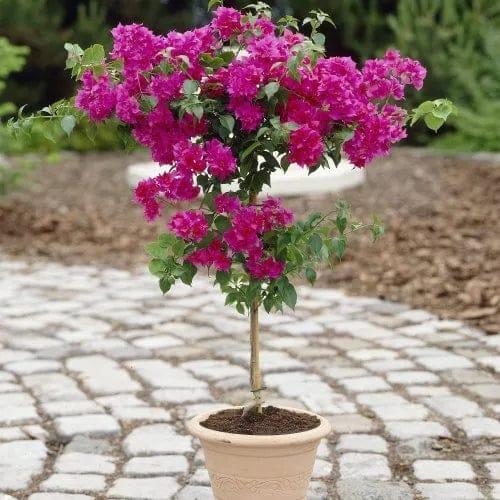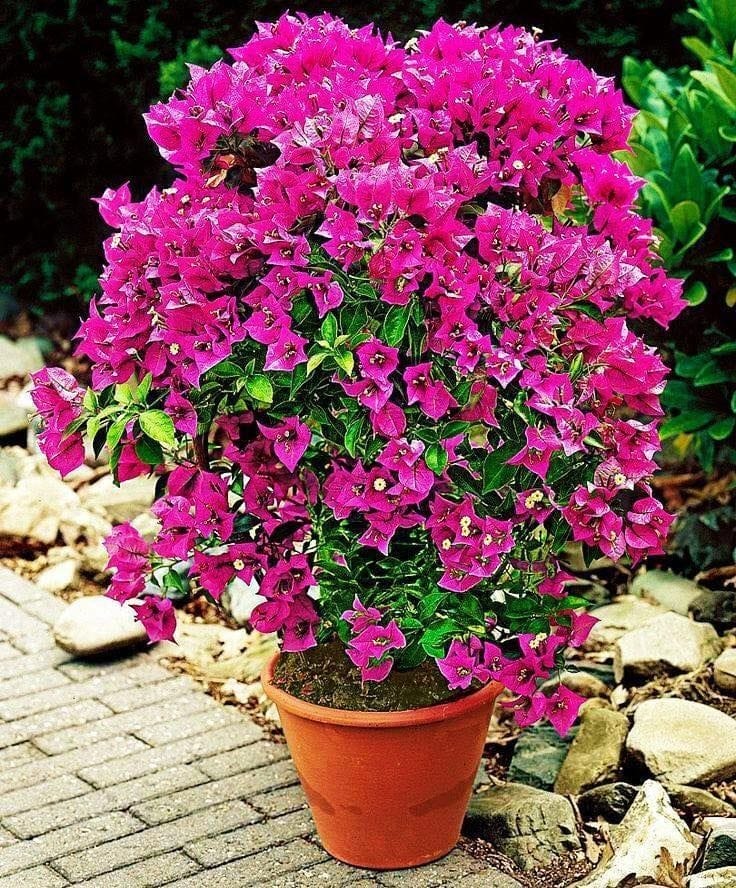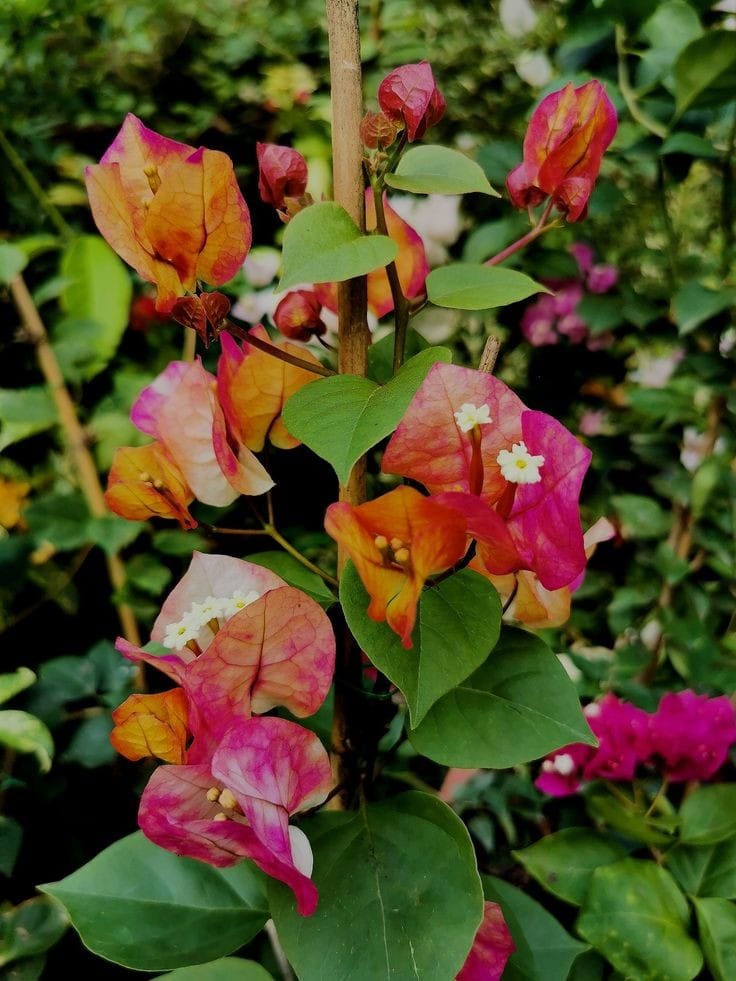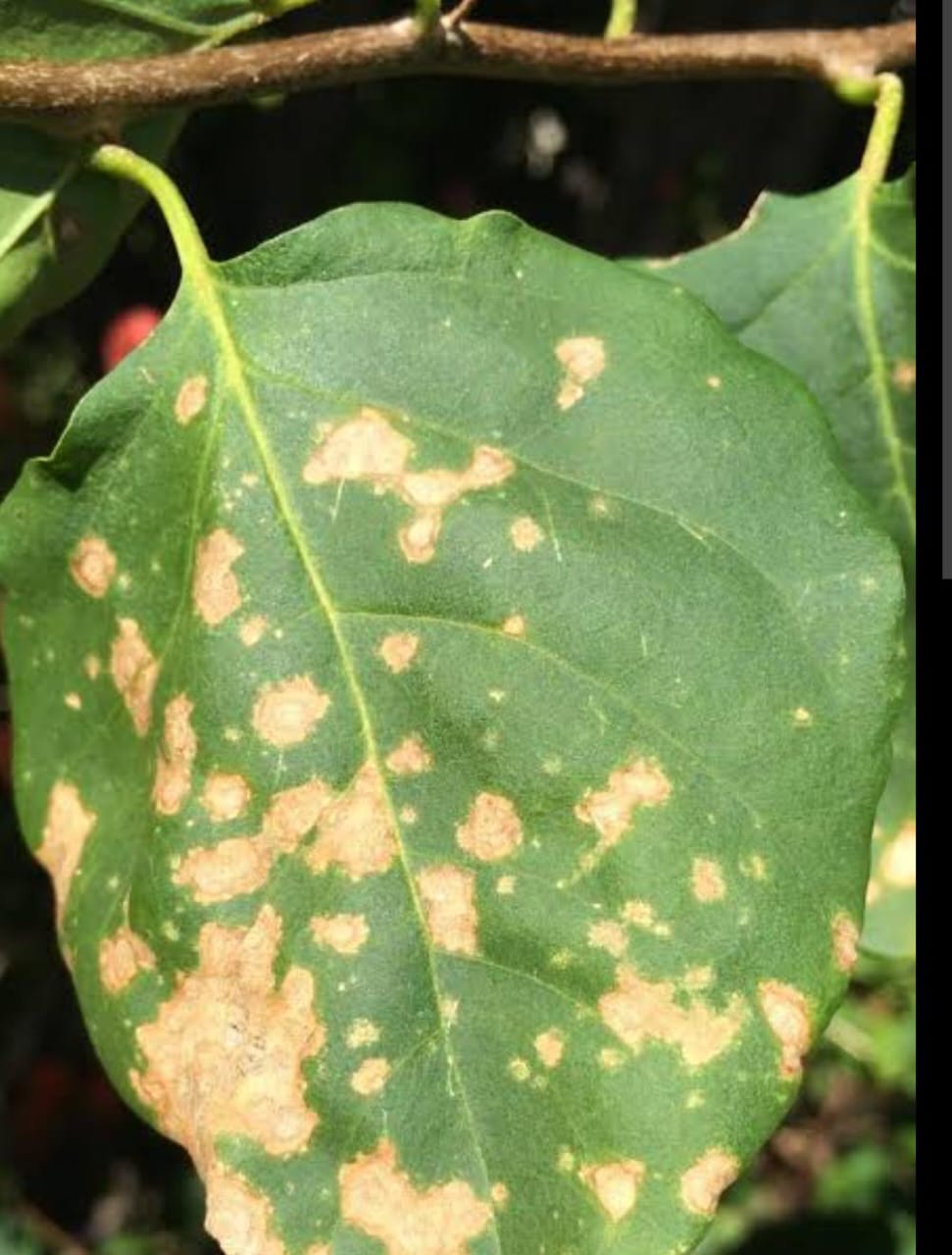Bougainvillea Thimma Plant
Bougainvillea Thimma, a specific variety, may have similar care requirements to other Bougainvillea varieties. Ensure full sun exposure, well-draining soil, and regular watering. Prune as needed to shape the plant and encourage prolific flowering.

Habit
Climber
Height
2-5m
Growth
Rapid
Soil
Well Drained
Shade
Full Sun
Moisture
Moist
Edible
No
Medicinal
No
Origin
India
Climatic Condition
Warm, tropical
Temperature (°)
20-38°C
Humidity (%)
55-75%
Potting media
Organic compost
Fertilizers
Organic, 10:10:10
Watering
Moderate
Plant Weight
N/A
Flowering Time
Spring to late summer
Soil Ph level
5.5-7.0
Water Ph level
6.0-7.5
Soil EC
Low
Yield Per Plant
22.333 grams
NPK ratio
10:10:10
life Span
6-12 years
Health Benefits
Air purification
Suggested Grow Media or Potting Mix ?
50% sand, 30% compost, 20% perlite
Suggested Fertigation/Fertilizers
Fertilize every 4 weeks with a balanced, water-soluble fertilizer.
Common Diseases and Remedies
Black sooty mould , leaf spot , root rot
Dis-colourization , stunting , yellowing and reddish centers on leaf
Bicarbonates
HEALTH BENEFITS
· Leaves and flowers used in traditional medicine for coughs, sore throat, and respiratory issues.
· May help regulate blood sugar levels.
· Antioxidant and anti-inflammatory properties.
What Is An Bougainvillea Thimma ?
It is a large growing and spreading shrub. The leaves are large and oval, with straight spines in the axils, and each leaf has a very rich yellowish-gold splash in the center of the leaf blade. The bracts are bicolored, white and pink or purple.

What Are The Different Types Of Bougainvillea Thimma ?
1. Imperial Thai Delight
It is a distinctive bougainvillea that you'll never forget. The bracts that surround the actual flowers look pure white, but over time they gradually turn pink from the edges.
2. Bougainvillea spectabilis
The first discovered Bougainvillea spectabilis, better known as B. brasilensis, remains the most vigorous, easiest to grow, and most cold-hardy of all varieties available. Temperatures that drop into the 20s are harmless, and they recover strongly when they drop a few more degrees.
3. Bougainvillea spectabilis thimma
Bougainvillea thimma Botanically known as Bougainvillea spectabilis thimma in the family Nyctaginaceae. This is an evergreen shrub vine known for its long-lasting, colorful flower bracts that appear periodically throughout most of the year.

How to Care Bougainvillea Thimma ?
1. Location
Can grow on arches, pergolas, trellises and compound walls, perfect for covering up ugly spots. Maximum height – Growth depends on supporting structure, but typically grows to a height of 8 to 12 meters.
2. Sunshine
Bougainvillea loves the heat! They require at least 6 hours of full sunlight per day and can survive even the hottest summers. If you want your plant to have lots of flowers, make sure it gets direct sunlight.
3. Soil
Soil should be well-drained, fertile and rich in organic matter.
4. Hydration
Water when the top layer of soil (2 to 3 inches) feels dry. Always keep water near the roots. Very little water is required.

5. Nourishment
To make the health of the plants better, he will spray organic fertilizer once a month, and water immediately after fertilizer application. For more vigorous flowering, use Phosphorus Fertilizer
6. Issues
Too much or too little water is one of the most common problems with bougainvilleas. Native to Brazil, this plant is drought tolerant and requires water only when needed. Too much water will cause the roots to become waterlogged and rot, and the plant's leaves will curl and turn yellow.
What are the Benefits Of Bougainvillea Thimma ?
Bougainvillea is a dietary supplement made from the dried and powdered leaves of the Bougainvillea plant. It is said to have antioxidant, anti-inflammatory, and antibacterial properties and is used to support healthy digestion, reduce inflammation, and boost the immune system.

FAQs About Growing Bougainvillea Thimma
1. What is bougainvillea tea good for ?
Aqueous extracts and decoctions of this plant have been used for fertility control by tribal peoples in many countries. Additionally, it has been shown to have anticancer, antidiabetic, antihepatotoxic, antiinflammatory, antihyperlipidemic, antibacterial, antioxidant, and antiulcer effects.
2. What spiritual effects does bougainvillea have ?
In other parts of the world, the bougainvillea flower signifies protection and spiritual connection, and in others it is considered a symbol of peace . Other well-known meanings include abundance, prosperity, and passion for relationships. Next time you visit Amorgos, be sure to take a photo with the beautiful bougainvillea vines.
3. What side effects does bougainvillea have ?
Bougainvillea is only slightly toxic to pets and children. Ingestion may cause nausea, vomiting, and diarrhea. Eating the leaves usually has no effect on healthy people, but they are by no means edible. It is dangerous if it has thorns.
4. Is bougainvillea poisonous or not ?
Although the leaves themselves are not toxic, a bite of the thorns can cause skin infections or allergic reactions. Therefore, please be careful about your pet. When ingested by humans, bougainvillea is not poisonous and is not considered a poisonous plant.
5. Is bougainvillea bad for the house ?
The sharp thorns of bougainvillea can cut through clothing and cause severe damage to bare skin. Not recommended for households with children, the elderly, or pets.


